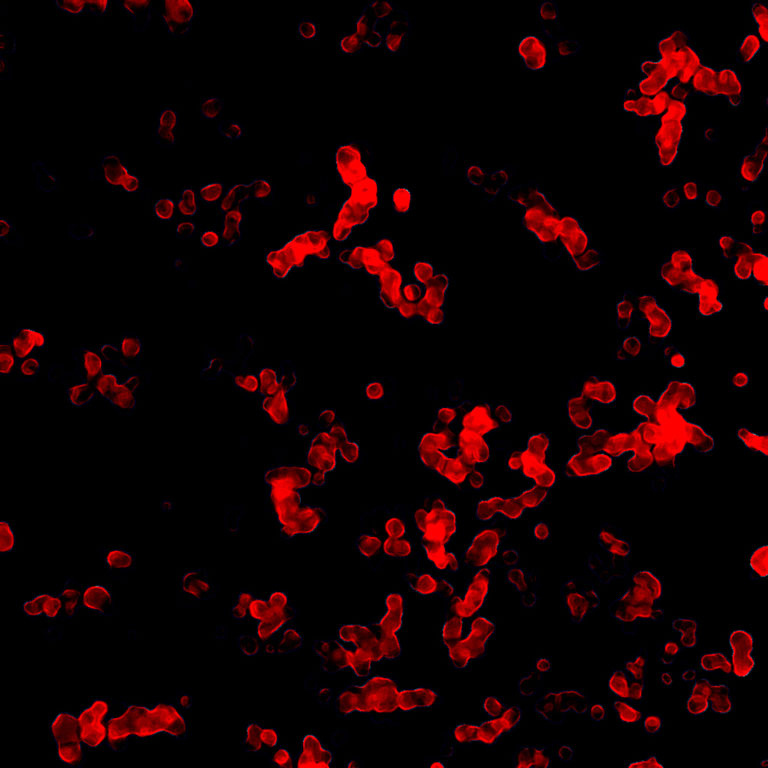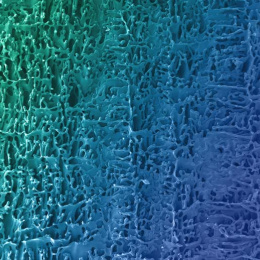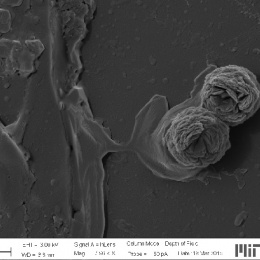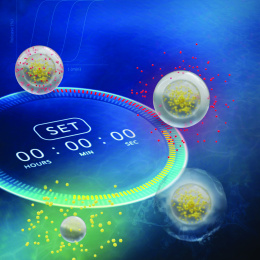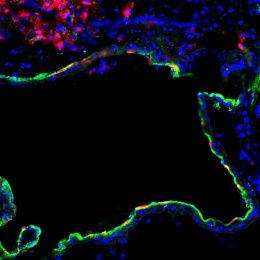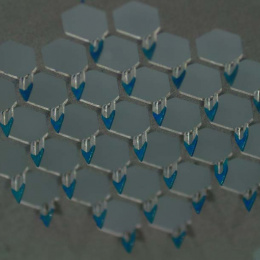Nanosponges Deliver RNAi, Image A
Nanosponges Deliver RNAi, Image A
Submitted by Young Hoon Roh, Erik C. Dreaden, and Paula T. Hammond
Koch Institute at MIT, MIT Department of Chemical Engineering
Young Hoon Roh, Erik C. Dreaden, and Paula T. Hammond
Hammond Laboratory, Koch Institute at MIT
Spectral Scanning Confocal Fluorescence Microscopy
RNA interference (RNAi) therapy allows researchers to silence the expression of nearly any gene that leads to the production of a disease-associated protein. Although this novel method provides unprecedented therapeutic potential, effective packaging and delivery of short RNA sequences which facilitate RNAi remains a challenge due to their poor stability in the body and inefficient cellular uptake. Koch Institute researchers in the Hammond Lab are engineering RNAi technologies which consist of short RNAi sequences that self-assemble into sponge-like nanoparticles, each containing half a million drug molecules in a space more than 100 times smaller than the width of a human hair. These RNAi nanomedicines, which exhibit high stability and efficient cellular delivery, are currently being investigated as a means of silencing cancer-associated genes. These images demonstrate the morphology of RNAi nanosponges and also confirm the existence of fluorescently-labeled small interfering RNA within the structures.
